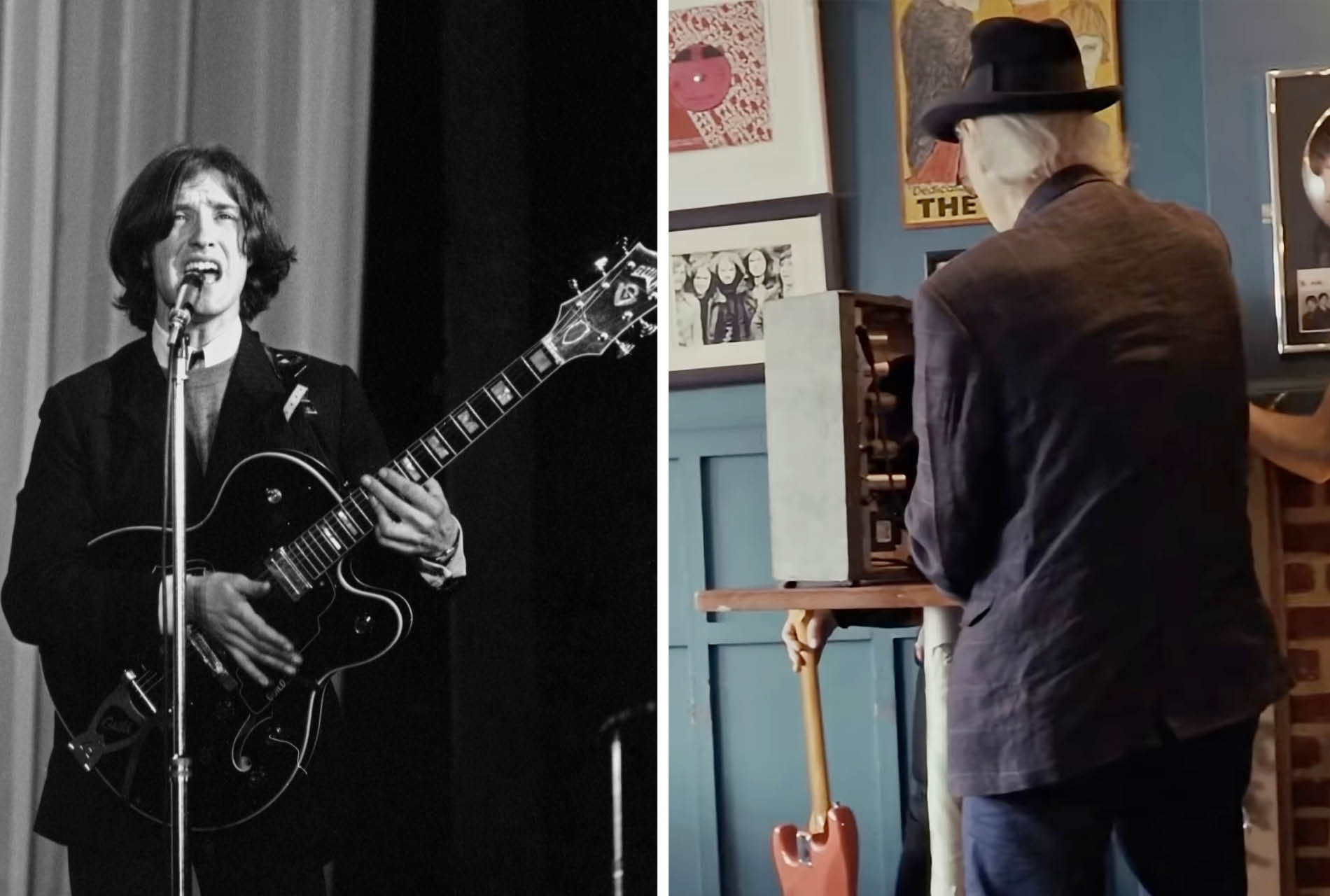“So, Dave, how do I slash the amp?”: Dave Davies picks up a razor and slashes a speaker on camera to demonstrate how he got the Kinks’ iconic proto-fuzz guitar tone
There are gear demos and then there are gear demos in which a guitar legend performs the most radical amp mod to show us how he got the guitar tone on You Really Got Me

Living through this golden age of guitar effects, it is hard to imagine a world without fuzz pedals, without an overdrive pedal to step on when we need some crunch, but that was the world in which Dave Davies and the Kinks found themselves when they were putting a new sound together.
The guitar amps of the early ‘60s were not doing it for them. Rock ’n’ roll had turned up the volume for electric guitar and yet that only whetted the appetite for players such as Davies, who wanted to push the envelope. Origin stories of classic guitar songs – and especially classic guitar sounds – tend to be contested after some decades pass.
Many will have Link Wray’s Rumble, the only instrumental to be band from the airwaves, as the first to showcase the gnarly sound of a slashed speaker, a radical proto-fuzz tone that could turn a simple power chords into Marlon Brando in The Wild One. But no one disputes that, if it wasn’t Wray who was first, it was Davies.
His adventures with the slashed speaker in a combo amp gave us one of the best electric guitar tones of all time, in the Kinks’ classic You Really Got Me, and having sat down with Jon Robb for the ex-Membranes frontman’s show for BBC Radio 4, For FUZZ Sake, to tell him how it was down, while the cameras were rolling Davies actually picked up a razor and slashed a speaker to show Robb how it was done.
“So, Dave, how do I slash the amp?” asks Robb, as he presents Davies with the razor. “It’s down the back, innit, on the speaker?”
Davies, seated, looking dapper, gets up and takes the razor. It might have been some years since he performed the mod on his own Elpico combo, aka “Little Green,” but that sort of thing never leaves you.

In this case, it looks like an early to mid-60s Silvertone Silvertone 1482 tube amp that’s about to be butchered.
Want all the hottest music and gear news, reviews, deals, features and more, direct to your inbox? Sign up here.
“The slash? Comes down here [slashes speaker] and that’s basically it,” says Davies. “That’s it, you can hear it now. That sounds great.”
Brilliant. Hang it in the Louvre. It’s as though someone had documentary footage of Hannibal crossing the alps on the back of an elephant and posted it on social media, history coming to life before our eyes. And Davies, with his Fender Stratocaster, is right, he does makes it sound pretty good. Primordial distortion never gets old.
The recording of You Really Got Me was a seminal moment for rock ’n’ roll, a watershed for guitar tone. The Kinks had just been signed to Pye Records. Davies was itching to give them something that they had never heard before. The trouble was the amplifiers. The headroom gave Davies a headache.
Speaking to MusicRadar in 2010, Davies described it as a period of experimentation.
“I thought all the guitar sounds sounded so clean and nice, but ordinary,” he said. “I found the Elpico amp in a shop just about two or three doors up from where we lived in Denmark Terrace, Muswell Hill. It was six or eight watts, or something.
“I plugged it in, and it was so ordinary. I got really mad with it! I got a single-sided razor blade and I slashed the speaker. I didn’t even expect it to work. I plugged it in and it came out with that rasping sound.”
Davies wasn’t finished. He then plugged that into a Vox AC30. He then thanked his lucky stars that he was wearing rubber-souled shoes that day. His DIY electronics would have sent health and safety compliance officers to the fainting couch.
I wanted a sound more like John Lee Hooker, or something that had a bit of a roughness; a bit of atmosphere
“After a few electric shocks, because it wasn’t earthed properly, and the mains hum was really loud, it was nearly as loud as the actual tone,” said Davies. “I wanted a sound more like John Lee Hooker, or something that had a bit of a roughness; a bit of atmosphere.”
As with all pop-cultural lightning bolts, not everyone was ready for it. No one had really heard anything like this before. No one would have known what was going on. It was all still new to Davies, too
“People either hated it, loved it, or thought it was funny,” he said. “I remember we did some shows before You Really Got Me came out, and we were still learning how to do it all. I think a big turning point was that sound.”
Robb documents this and more as For FUZZ Sake takes him to ‘50s America as he puts together the origins of distortion and fuzz on record. We don’t recommend slashing the speaker at home. But then, you do you.
If you are, however, protective of your amp’s warranty and want to get that Davies sound, there are, however, safer options.
Launched in 2021, Electro-Harmonix’s Ripped Speaker Fuzz would be a good place to start, and it only costs $87. Much cheaper than a replacement speaker – and it even has a "Rip" knob.
You can listen to Jon Robb’s For FUZZ Sake on BBC Sounds.
Jonathan Horsley has been writing about guitars and guitar culture since 2005, playing them since 1990, and regularly contributes to MusicRadar, Total Guitar and Guitar World. He uses Jazz III nylon picks, 10s during the week, 9s at the weekend, and shamefully still struggles with rhythm figure one of Van Halen’s Panama.
You must confirm your public display name before commenting
Please logout and then login again, you will then be prompted to enter your display name.


